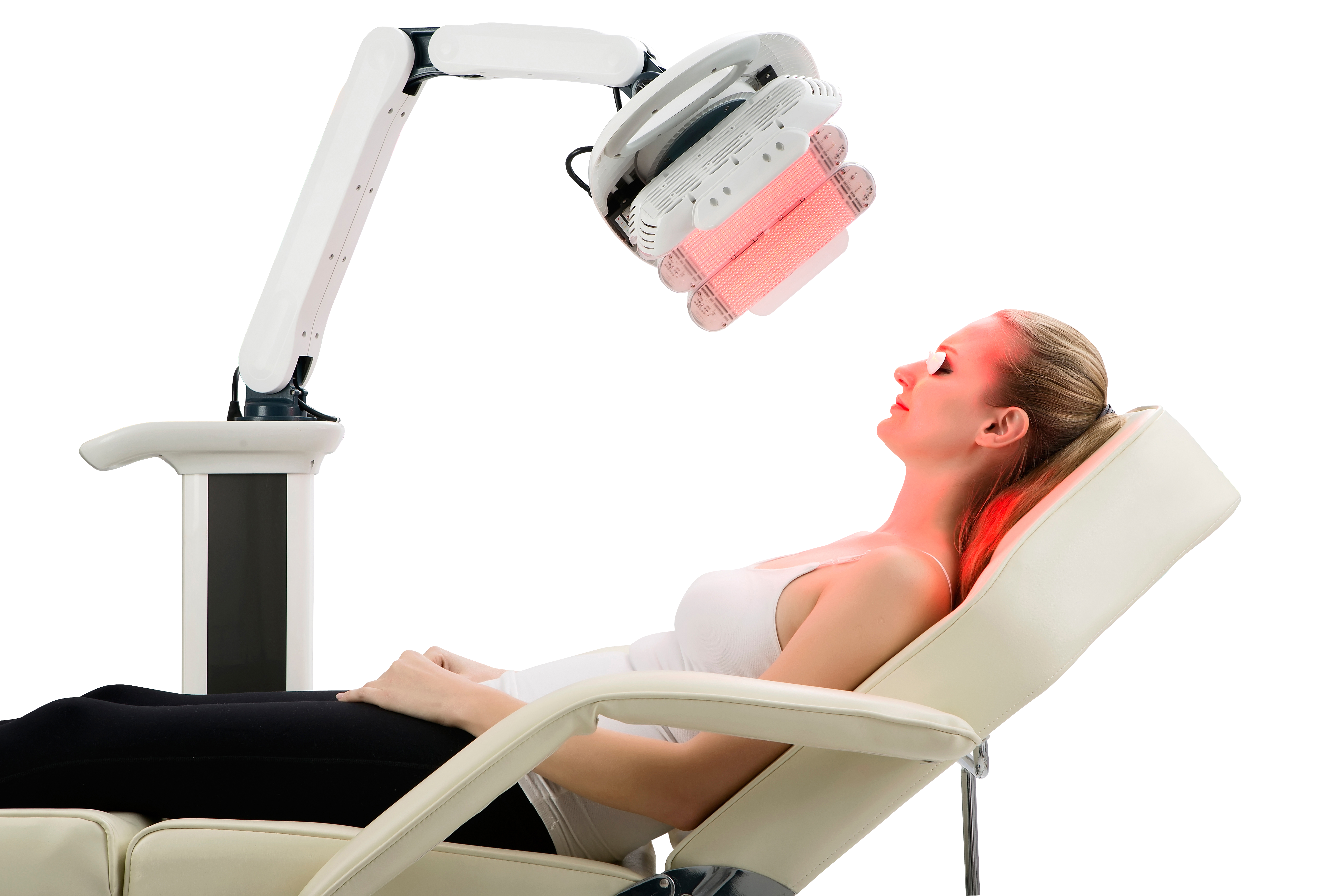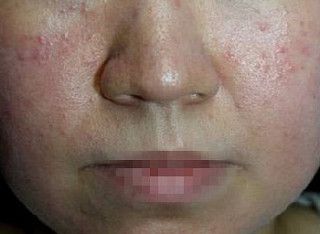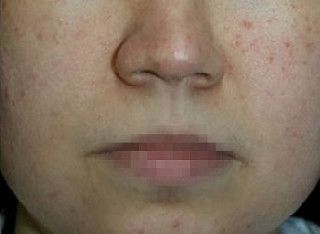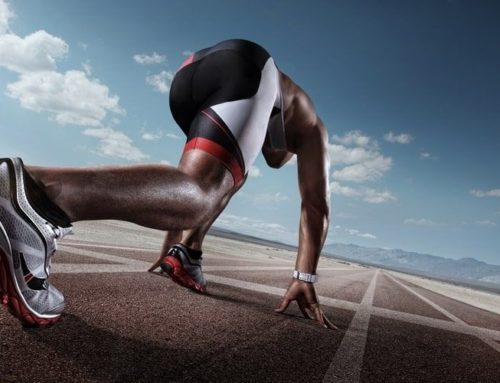Anyone that struggles with acne will know that it is a constant battle to try and clear your skin – you’ve probably tried all kinds of serums, creams and maybe even over the counter medicines from your doctor.
It’s one of the most common skin conditions, and whilst many people leave acne behind in their teenage years, it is not uncommon for people to have acne into their twenties, thirties or even beyond.
Acne can be pretty stubborn, and if left for a long period of time, can leave skin damage which can be permanent.
In this article we will discuss what acne is, how it’s caused & how LED Light Therapy could potentially help you on you journey to clearer skin.

What is acne? Why do I have it?
Acne is a very common skin condition that causes pimples, mostly on the face, forehead, chest, shoulders and the back. Most people associate acne with teenage skin, however adults can also develop acne. There are a wide variety of causes for acne, including; genetics, fluctuating hormone levels, stress, high humidity and using oily or greasy products on the skin/hair.
Acne is most commonly linked to changes in hormone levels during puberty but it can also start at any age. Certain hormones (primarily androgens) cause the grease-producing glands next to hair follicles in the skin to produce larger amounts of oil (abnormal sebum). This abnormal sebum changes the activity of a usually harmless skin bacterium called P. acnes, which becomes more aggressive and causes inflammation and pus. Androgen hormones can also thicken the inner lining of the hair follicle, causing blockage of the pores. Cleaning the skin does not help to remove this blockage.
Acne can also run in the family – so if your parents have had acne, you are likely to also get acne.
Often people believe that diet and exercise can play a part, however this is not likely to be the case. There’s no evidence to suggest that diet, poor hygiene or sexual activity play a causal role in acne, though they may exacerbate it if the skin isn’t cleaned.
What are the different types of acne?
- Whiteheads: Bumps that remain closed by oil and dead skin.
- Pustules: Pimples that contain pus, they can look like whiteheads surrounded by red rings. This type of acne can cause scarring if picked or scratched.
- Nodules: Solid pimples that lay deep within the skin, they are large and painful.
- Cysts: Pus-filled pimples and can cause scarring on the skin.
- Papules: Small red or even pink bumps that become inflamed.
- Blackheads: Bumps on the skin that are filled with excess oil and dead skin. People often assume that blackheads are dirt, however those dark spots are actually caused by an irregular light reflection off the clogged follicle.
- Fungal acne: A type of acne which occurs when an excess of yeast develops in the hair follicles, this type of acne can become itchy and inflamed.
How can I help keep my acne under control?
- Ensure you wash your face – Wet your face with warm water and apply a cleanser while using a gentle, circular motion with your fingers. Rinse cleanser thoroughly and pat your skin dry.
- Don’t over exfoliate your skin – Over-exfoliation can leave your skin feeling sore, bruised, red and irritated and can cause your acne to become inflamed.
- Go easy on the makeup – Makeup products can clog up your pores and trigger outbreaks, particularly if you are working out/doing exercise as the sweat can also cause blockages. Use water-based non-comedogenic products, as they’re less likely to block the pores in your skin. If wearing make-up ensure that you are cleansing your face thoroughly after wearing, and remove any makeup before bed.
- Avoid touching your face – This can be difficult, however touching your face can transfer bacteria onto your skin.
- Don’t pick your pimples – We know this can be tempting as you may be self-conscious about your acne/pimples, however popped pimples can bleed and they can make the issue worse.
Does picking at acne make the problem worse?
Picking at your skin when you have acne might be tempting to offer short term aesthetic solutions, but it is not recommended, as it can cause both immediate and lasting damage.
- Your pimple can then become inflamed and also clog the surrounding pores.
- Your skin can break (bleed) and become infected, leading to further issues on the skin.
- Not only can they bleed but you could also cause scarring to your skin which can leave behind longer lasting damage.
When should I seek medical advice?
If you have mild acne, you can always speak to a pharmacist you will be able to offer you advice on medicines that can treat your condition, however if you feel these don’t help, or you are really unhappy with your skin – you should see your GP.
Do be mindful that treatments can take up to 3 months to start to work, be patient and stick with it.
How can LED Light Therapy help acne?
LED light therapy is a popular, pain free and non-invasive treatment that is perfect for both acne and acne scarring. The Healite II is a powerful LED system that can offer different wavelengths to help support different skin conditions, no matter what age or skin type you are.
Cells absorb light energy without incidence of damage from heat or physical trauma. Cell repair and function can also be enhanced, as well as stimulating proliferation. LED light therapy can be used as a standalone therapy or as an enhancement of recovery with nearly any medical procedure.
415 nm light
Ideal for – Active acne.
415NM light (blue) is used to kill bacteria on the surface of the skin and reduce activity in glands under the surface of the skin which produce oil. Both bacteria such as Propionibacterium acnes (P. acnes) and excessive oil production are major causes of acne. Blue light at this wavelength is naturally antimicrobial, and kills P. acnes by activating porphyrin chemicals within it. This induces singlet oxygen production within the P. acnes, a powerful free radical, which sends the affected P. acnes into programmed cell death, or apoptosis. The removal of the bacteria removes the cause of acne and aids recovery.
633 nm light
Ideal for – Rejuvenation of skin post-acne treatment with blue light.
663NM light (red) activates the body’s natural rejuvenation processes to counteract the signs of ageing by activating local cellular metabolism, promoting circulation, accelerating cell renewal and collagen production. This makes your skin more healthy, plump and taught, improving the appearance of skin around the acne.
830 nm light
Ideal for – Acne scarring
830NM light (near infra-red) has many other healing functions and can be used to treat post-operative wounds, accelerate healing following cosmetic procedures. It’s use in treating acne is reducing the appearance of acne scarring. Many people with acne, particularly those who have had it for a long time, will have small dimple-like scars over the affected area. This yellow light can help the body heal those scars, and while unlikely to make them disappear it can reduce their appearance and help the skin smoothen.
Will a home-use LED mask help?
We would advise against spending money on a mask or LED device that is being sold to be used at home. While it may be tempting to purchase a device which allows you to use it as frequently as you would like, these masks are not proven to have any positive effect on acne.
These devices are subject to much less rigorous testing than professional LED Light Therapy devices, and may not produce light of the right wavelengths to produce the desired effect. They also use research to back up their therapeutic claims which was carried out using professional devices.
If you think that LED Light Therapy may be useful for your acne of skin conditions, your best bet is to find a clinic near you which has a Healite II. Depending on the clinic and supplementary treatments, these sessions can cost as little as £15-30.
You can find clinics with the Healite II near you on our clinic finder under the PINK pins.






